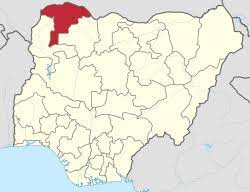INTRODUCTION
Sokoto is one of the seven states that form the North-West geopolitical zone of Nigeria. It is bordered to the North by the Republic of Niger, Zamfara State to the East, and Kebbi State to the South and West. The city of Sokoto is the state capital.
LANDMASS, LOCATION AND POPULATION
Sokoto State covers an area of 25,972 square kilometres. The state is located between latitudes 40 to 60 North and longitudes 110 to 130 East. It has a population of 3,702,676 (2006 census) 4,998,090 (2016 forecast) and a population density of 142. The state accounts for 2.3% of Nigeria's total population.
HISTORY AND PEOPLE
Prior to the establishment of Sokoto as a ribat (military camp or frontier) in 1809, the area that is present-day Sokoto State was home to Hausa states with large populations. These Hausa states of Gobir, Kano, Katsina and Kanem-Bornu eventually fell under the control of Usman dan Fodio and the Fulani jihadists and became part of the Sokoto Caliphate.
When Dan Fodio died in 1817, his son Muhammed Bello succeeded him as the Sultan of Sokoto and his brother Abdullahi was given the western divisions of the caliphate to run; however, supreme authority rested with Bello. At the height of its power, the Sokoto Caliphate extended as far as Ilorin, Kwara State.
The empire fell after the British conquest of 1903 and the death of Attahiru, the Sultan of Sokoto, and became part of the Northern Region in the three-region structure of 1954. In 1967, the military government of General Yakubu Gowon merged Sokoto and Niger provinces to form the North Western state. North Western State was split into Sokoto and Niger States by the military government of General Murtala Muhammed in 1976.
The Hausas are the largest ethnic group in Sokoto State followed by the Fulanis. Minority groups include the Zabarmawa, Tuareg and the Dakarkari. The majority of the population is Sunni Muslim. There is also a small group of Shia Muslims there.
MAIN TOWNS AND CITIES
Sokoto (capital), Wurno, Gwada-bawa, Yabo, Tambulwal, Ilela, Binji and Bogingo.
LOCAL GOVERNMENT AREAS
ADMINISTRATORS AND GOVERNORS
Umaru Mohammed (Governor- Military): March 1976 - July 1978
Gado Nasko (Governor - Military): July 1978 - October 1979
Shehu Kangiwa (Governor - Civilian (National Party of Nigeria)): October 1979 - November 1981
Garba Nadama (Governor - Civilian (National Party of Nigeria)): 1982 -December 1983
Garba Duba (Governor- Military): January 1984 - August 1985
Garba Mohammed (Governor - Military): August 1985 - December 1987
Ahmed Daku (Governor - Military) December 1987 - August 1990
Bashir Magashi (Governor- Military): August 1990 - January 1992
Yahaya Abdulkarim (Governor - Civilian (National Republican Convention)): January 1992 - November 1993
Yakubu Mu'azu (Administrator - Military): December 1993 - August 1996
Rasheed Raji (Administrator - Military): August 1996 - August 1998
Rufai Garba (Administrator - Military): August 1998 - May 1999
Attahiru Bafarawa (Governor - Civilian (All Nigeria People's Party)): May 1999 - May 2007
Aliyu Wamakko (Governor - Civilian (People's Democratic Party)): May 2007 - April 2008
Abdullahi Salame (Acting Governor - Civilian (People's Democratic Party)): April 2008 - May 2008
Aliyu Wamakko (Governor - Civilian (People's Democratic Party)): May 2008 - May 2015
Aminu Tambuwal (Governor - Civilian ( All Progressives Congress/People’s Democratic Party )) May 2015- Present
ECONOMY AND EDUCATION
Agriculture is the mainstay of Sokoto State's economy. The riverine floodplains produce cash crops, including groundnut, cotton and rice. Sorghum, millet, cowpeas and cassava are found in the upland areas. Much of the land in the state is used for grazing cattle. Cattle hides, goatskin, sheepskin and finished leather products are significant exports, as are cattle, goat and fowl. The state possesses limestone and kaolin deposits and Sokoto City, the state capital, is home to a cement factory, tanneries and a modern abattoir.
Tertiary institutions in the state are Usman Dan Fodio University, Sokoto; Sokoto State University, Sokoto; Umaru Ali Shinkafi Polytechnic, Sokoto and Shehu Shagari College of Education, Sokoto.
FAMOUS SITES AND CULTURE
Sites
Usman Dan Fodio's Tomb, Sokoto
Usman dan Fodio’s tomb is near the palace of the Sultan of Sokoto. Dan Fodio, the founder of the Sokoto caliphate, was an Islamic scholar who supported schooling among both men and women.
Sultan of Sokoto's Palace, Sokoto
The Sultan of Sokoto’s palace was built by Sultan Bello in 1808. The palace houses historical relics of previous rulers of Sokoto Caliphate. It is also a symbol of both ancient and modern architecture.
Surname Cultural Landscape
Surname Cultural Landscape is an ancient city created by King Muhammadu Kanta Sarkin Kebbi in the 16th Century. A defensive wall was built around it to fend off attacks. The wall and its gates are made of huge rocks. The site which was declared an ancient national monument in 1964 was added to the UNESCO World Heritage Tentative List in 2007.
Culture
The Sharo festival is an annual initiation rite among Fulani nomads in the state. During the festival, eligible young men are whipped to determine their suitability for marriage.
The Haibi festival is a yearly hunting expedition by men in some communities in Sabon-Birnin, Dange, and Yabo local government areas of the state.
Other major cultural events in Sokoto State are the Aikin Gawa, Kalankuwa, Nwunyu Fishing and Romo Fishing festivals.
NOTABLE INDIGENES
Usman Dan Fodio (1754 – 1817)
Ahmadu Bello (1910 -1966)
DID YOU KNOW
Sokoto leather is considered the finest in the world.
SOKOTO STATE IN PICTURES

